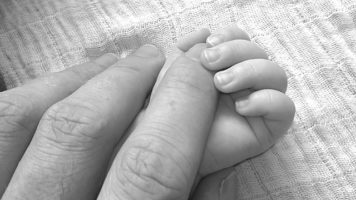 TV personality, model and business woman Amy Childs recently shared an intimate moment on Instagram with her fans where she asked for advice on the subject of postpartum hair loss. Childs struck a responsive chord with her fans, many of whom were quick to share their advice and personal experiences with her in the comments section of her post on the social media app.
TV personality, model and business woman Amy Childs recently shared an intimate moment on Instagram with her fans where she asked for advice on the subject of postpartum hair loss. Childs struck a responsive chord with her fans, many of whom were quick to share their advice and personal experiences with her in the comments section of her post on the social media app.
What is postpartum hair loss?
During and straight after pregnancy, a woman’s hormone levels change dramatically. Initially during the pregnancy, many women will notice their hair getting thicker, shinier and falling out much less than the usual rate of hair loss. This effect is due to the increased blood volume and circulation in the expectant mother’s body. However once the baby arrives and the hormone levels drop, many women experience their hair falling out in large clumps to make up for the hair that wasn’t lost in the last nine months.
Postpartum hair loss can set in at any time after the baby arrives; usually it will peak four months after birth and may even continue up to one year. The condition is not something to worry about and unfortunately it cannot be stopped nor prevented.
How to make hair look thicker and fuller
Postpartum hair loss cannot be prevented but you can try the following tips to improve the appearance of your hair;
- Hold off any heat styling or aggressive styling with hairbrushes and backcombing to allow your hair to recover and strengthen
- Eat a well-balanced diet to ensure your hair is getting all the nutrients it needs for optimal growth
- Take vitamin supplements – this isn’t an excuse to skip eating your five a day, but they can improve your overall health, which reflects on hair growth and quality
- Use a light volumising shampoo to give your hair a more lustrous look and avoid it being weighed down by conditioning products
Although if it’s been more than one year since giving birth and you are still noticing large clumps of hair falling out, then you should probably speak to a doctor or hair loss expert to make sure there isn’t an underlying problem for the hair loss.
